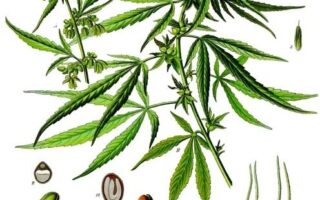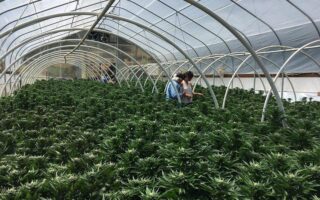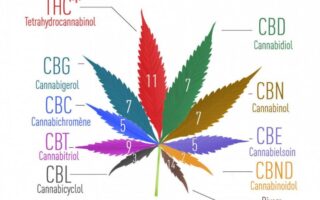As the haze of social acceptance and legal reforms surrounding marijuana continues to lift, revealing a landscape that is both complex and evolving, it’s becoming increasingly important to examine the shadows that accompany this once-taboo plant. While many tout its therapeutic benefits and economic potential, a closer look unveils a myriad of challenges that warrant thoughtful discussion. From public health concerns and legal ambiguities to the environmental implications of cultivation and the social dynamics of legalization, the conversation surrounding marijuana is far from one-dimensional. This article seeks to navigate the intricate web of issues related to marijuana use and production, shedding light on the problems that persist even in an era of growing acceptance. Join us as we explore the multifaceted concerns that demand our attention in this new age of cannabis culture.
Table of Contents
- Understanding the Health Risks Associated with Marijuana Use
- Navigating the Legal and Regulatory Challenges of Cannabis
- Addressing the Social and Economic Impacts of Marijuana Legalization
- Exploring Effective Strategies for Responsible Consumption and Education
- Q&A
- Key Takeaways
Understanding the Health Risks Associated with Marijuana Use
Marijuana use, while often viewed through the lens of its benefits, can also pose significant health risks that merit careful consideration. Among the most pressing concerns is the impact on mental health, particularly for young users. Studies indicate a correlation between frequent marijuana consumption and the onset of psychological disorders, including anxiety, depression, and psychosis. Furthermore, the risk of developing dependency on marijuana can increase with prolonged use, leading to withdrawal symptoms and challenges in everyday functioning.
Physical health is not exempt from the potential drawbacks of marijuana consumption. Respiratory issues can arise from smoking the substance, as it exposes the lungs to irritants similar to those found in tobacco smoke, potentially resulting in chronic bronchitis and other lung complications. Additionally, marijuana can affect cognitive functions, impairing memory, attention, and coordination, which may pose dangers, especially in situations requiring focus, like driving. Below is a table summarizing some of these health risks:
| Health Risk | Description |
|---|---|
| Mental Health Issues | Increased risk of anxiety, depression, and psychosis. |
| Dependency | Potential for withdrawal symptoms and functional decline. |
| Respiratory Problems | Similar irritants to tobacco smoke leading to chronic issues. |
| Cognitive Impairment | Effects on memory, attention, and coordination. |
Navigating the Legal and Regulatory Challenges of Cannabis
The cannabis industry is currently engulfed in a maze of legal and regulatory challenges that create significant hurdles for those involved. State laws differ substantially from federal regulations, leading to a patchwork of guidelines that can be both confusing and contradictory. This inconsistency affects various aspects of the cannabis business, including operations, marketing, and financial transactions. Compliance issues often arise due to the lack of clear directives, requiring businesses to invest heavily in legal counsel and compliance frameworks to avoid potential penalties. Stakeholders must navigate a landscape riddled with potential pitfalls, where a single misstep can result in hefty fines or even shutdowns.
Compounding these difficulties are the emerging complexities of banking and tax regulations for cannabis businesses. Many banks remain hesitant to engage with the cannabis sector due to lingering federal prohibitions, pushing businesses towards cash-only operations, which further complicates transactions and security. Additionally, tax treatment under the IRS’s Section 280E prohibits cannabis businesses from deducting common business expenses, leading to inflated tax liabilities. The following table outlines some of these critical regulatory challenges:
| Challenge | Description |
|---|---|
| Inconsistent State Laws | Variations in cannabis laws across states cause confusion and complicate compliance. |
| Banking Restrictions | Many banks avoid cannabis transactions, leading to cash-only operations. |
| Tax Implications | Section 280E limits tax deductions, increasing the financial burden on businesses. |
Addressing the Social and Economic Impacts of Marijuana Legalization
The legalization of marijuana has undeniably reshaped both social and economic landscapes, leading to shifts that merit careful examination. On one hand, advocates argue that it has fostered job creation and stimulated local economies. For instance, employment opportunities in cannabis cultivation, retail, and ancillary services have surged, boasting potential revenues in the billions. However, this burgeoning industry has also birthed various social challenges, such as increased access for minors and potential normalization of drug use that may ultimately impact public health and safety positively and negatively.
Moreover, the disparity in economic benefits raises pressing concerns, particularly regarding equitable access for marginalized communities. In many cases, those historically affected by marijuana prohibition are often sidelined in the emerging market, suggesting an urgent need for policies that address these inequities. The following table summarizes key metrics surrounding the economic impacts of legalization:
| Impact | Positive Aspects | Challenges |
|---|---|---|
| Job Creation | Increased employment in cannabis sector | Shortages of skilled labor in compliant operations |
| Tax Revenue | Significant funds for public services | Potential mismanagement of generated tax funds |
| Community Investment | Funding for education and health initiatives | Failure to reach affected communities |
Exploring Effective Strategies for Responsible Consumption and Education
As the conversation around marijuana continues to evolve, understanding the implications of its use becomes crucial. Education plays a pivotal role in shaping responsible consumption, allowing individuals to make informed choices. Consider the following strategies to enhance awareness:
- Comprehensive Education Programs: Implementing community workshops and online resources that focus on the effects, benefits, and risks associated with marijuana use can empower individuals to make informed decisions.
- Promoting Open Dialogue: Encouraging discussions in schools, workplaces, and among peers can demystify marijuana use and highlight responsible consumption practices.
- Targeted Campaigns: Utilizing social media platforms to share factual, engaging content about marijuana can effectively reach diverse audiences, particularly the younger demographic.
In exploring the environmental and health considerations tied to marijuana production and consumption, it’s essential to adopt a multi-faceted approach. The following table outlines relevant factors that underscore the need for responsible practices:
| Factor | Impact |
|---|---|
| Water Usage | High water consumption during cultivation can strain local resources. |
| Pesticides | Use of harmful chemicals can affect surrounding ecosystems and health. |
| Carbon Footprint | Greenhouse gas emissions from indoor growing operations contribute to climate change. |
Q&A
Q&A: Understanding the Problems with Marijuana
Q1: What are some common health concerns associated with marijuana use?
A1: While many users report the therapeutic benefits of marijuana, there are health concerns that cannot be overlooked. Frequent use can lead to respiratory issues similar to those caused by smoking tobacco, as inhaling marijuana smoke exposes users to toxic chemicals. Additionally, heavy use is linked to mental health issues such as anxiety, depression, and in some cases, psychosis. The impact on cognitive function, particularly in adolescents, is another area of concern, especially regarding memory and learning abilities.
Q2: Can marijuana use lead to addiction?
A2: Yes, marijuana can be addictive for some individuals. Research estimates that about 9% of users may develop a dependence, a number that increases among those who start using in their teens. The phenomenon, often referred to as “marijuana use disorder,” can manifest as an inability to control usage, cravings, and withdrawal symptoms when not using the drug.
Q3: What impact does marijuana have on driving performance?
A3: Marijuana impairs motor coordination, reaction time, and judgment, which are crucial for safe driving. Studies have shown that drivers under the influence of marijuana are at a higher risk of being involved in accidents. The combination of THC (the active compound in marijuana) and other impairments, such as alcohol use, can significantly amplify the dangers.
Q4: How does marijuana use affect academic and professional performance?
A4: Regular marijuana use, particularly among younger users, can adversely affect academic performance. Studies indicate that it may lower motivation, impair concentration, and reduce overall cognitive function, leading to poorer grades and academic attainment. In the workplace, these effects can translate to decreased productivity, difficulties with time management, and higher absenteeism.
Q5: What are the societal implications of marijuana legalization?
A5: While legalization can lead to economic benefits such as increased tax revenue and job creation in the cannabis industry, it also raises concerns about public health and safety. Increased availability may lead to higher consumption rates, especially among youth. This shift could also potentially add strain on healthcare systems due to an uptick in marijuana-related health issues, as well as challenges surrounding regulation and enforcement.
Q6: Is there a difference between medical and recreational marijuana in terms of problems?
A6: While medical marijuana is often prescribed to alleviate specific health conditions, its usage isn’t devoid of risks. Medical users may still face issues such as dosage mismanagement, potential dependency, and interactions with other medications. Recreational marijuana, while not intended for medical purposes, can lead to similar risks related to addiction, cognitive impairment, and social issues. Thus, both forms carry potential drawbacks, albeit for different reasons.
Q7: What should individuals consider if they are thinking about using marijuana?
A7: Individuals should weigh the pros and cons carefully. It’s essential to consider personal health, history of substance use, and potential legal implications depending on their jurisdiction. Engaging in informed discussions with healthcare providers can offer valuable insights, particularly regarding pre-existing medical conditions or medications. Ultimately, understanding one’s own motivations and limits is crucial in making a responsible choice about marijuana use.
Q8: How can communities address the potential problems associated with marijuana use?
A8: Communities can play a vital role by promoting education and awareness about the risks of marijuana use. Implementing prevention programs, facilitating access to mental health services, and encouraging healthy lifestyle choices can help mitigate issues. Additionally, developing comprehensive regulations that balance use with public health and safety considerations can lead to more informed consumption and better outcomes for society as a whole.
while marijuana can offer benefits to some individuals, it is essential to remain aware of its potential drawbacks and approach its use with caution, awareness, and responsibility.
Key Takeaways
while the conversation surrounding marijuana has evolved significantly, it remains essential to approach the various issues associated with its use with a balanced perspective. From potential mental health implications to the challenges of regulation and public perception, the complexities surrounding marijuana are as multifaceted as the plant itself. As society continues to navigate the changing landscape of cannabis, informed dialogue and ongoing research will be crucial in helping us understand both the benefits and drawbacks. Recognizing these problems not only fosters responsible usage but also promotes a more nuanced conversation about marijuana in our communities. Whether you are an advocate or a skeptic, an open mind is essential as we continue to unravel the layers of this intricate topic. After all, the dialogue is just as vital as the substance itself.


